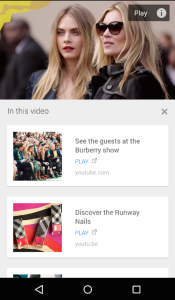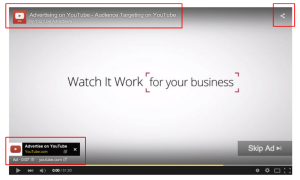Today, consumers have extremely high expectations when it comes to information. The faster and more accurate, the better. The world we live in is constantly connected and countless moments each day are devoted to searching for answers, the discovery of new things, researching before making decisions or even simple entertainment. Those brands that are most successful are those that can provide the ideal experience at the ideal moment. The moment the consumer needs it.
Five years ago, Google AdWords launched TrueView ads, giving users the option of either viewing the ad or skipping it completely. They had faith in consumers, however, and trusted that viewers would choose to watch the ads on YouTube if the ads were relevant to their interests and engaging. In the past five years, TrueView has evolved substantially, branching out to include mobile access, allowing for better measurability with Brand Lift, and becoming even more interactive with things like in-ad app downloads. The creativity of TrueView is even better today, with many more interactive aspects and a more accurate gauge of the engagement of the audience.
Cards increase interactivity
Cards are being introduced for TrueView in-stream ads, as a result of a demand for greater interactivity, especially on mobile devices. Cards are a new feature, allowing for greater engagement and interaction in the experience of viewers on all media devices.
Last month was the launch of cards as an evolution of the AdWords annotations feature. The launch to videos on YouTube allowed for a more esthetically pleasing and streamlined way for viewers to stay informed about other things that might catch their interest. Whether they be other videos, playlists or anything else. The opportunity to share a multitude of information about your brand, suggest related videos or playlists is thanks to cards coming to TrueView in-stream ads. Soon, you’ll be able to link your website directly in the TrueView in-stream ad.
Run your ad on all screens at once with cards. With free-form annotations, ads aren’t able to work on mobile, as well as appear on connected TVs, but with cards, they are. With this availability, viewers will always have information about video ads at their fingertips, no matter how they’re viewing YouTube.
Throughout this next year, Google AdWords will unveil more specialized cards that serve specific needs, which is something that was started with TrueView for app promotion in the past. Providing a platform for more actionable features is what makes cards, and TrueView a more actionable format.
Making the most for viewer actions
The internet can be a fickle place, so AdWords only counts a view when someone shows actual interest and intent to watch your video. TrueView is built on the foundation that strong interest in your brand is shown by a viewer choosing to watch your video. With all of the new interactive features, AdWords can go even further and enable optimization for viewer actions. Clicking on a card or engaging in any other elements of your in-stream ad will also be counted along with the instance of a viewer watching an ad. Engaging in the other elements is a strong indicator of interest. Of course, AdWords will bill for additional click interactions, just as they do for TrueView for app promotions. In May, there will be a change in policy. AdWords will only charge for a counted view, and won’t bill for both a click and a full view, but rather either/or.
In-stream and new click behavior
In the past, clicking anywhere on the media player would register as a click, and charge you accordingly. Now, to ensure that advertisers are only paying for actual, deliberate clicks on video ads, AdWords is amending where users can click on in-stream ads. Currently, only those clicks on the video header, the companion banner, link at the bottom of the player, CTAs or cards will count as an actual click.
Though TrueView has always been focused on options for users, AdWords believes the new features will add even more engagement to video ads. Stay tuned for the constant evolution of the TrueView platform.


